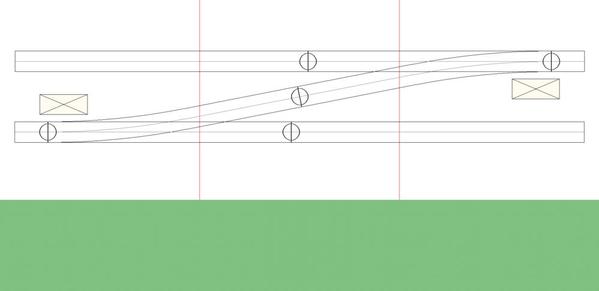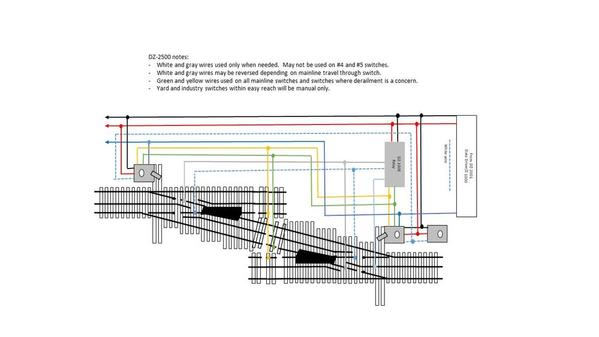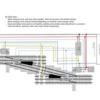My question is regarding how to create the dead sections required for the Non-Derailing feature, since there is no portion of track between the two turnouts.
I am assuming that the reals of the actual switches would have to be cut.
I guess I'm not understanding. I think you are talking about a crossover like this where both switches are wired to one controller:

Since both switches work together, Bob's is correct when he says "...then the entire crossover will either be thrown straight (with both switches set straight) or to cross over (with both switches set diverging). You don't need "non-derailing" in this case." In my diagram, the green wire to the track may be confusing, it is not needed and should not be there.
The way I have mine setup is if the switches are set in the crossover position, and a train comes from left to right on the top track, the non-derailing function with set the top switch to straight. Since the switches are wired to work together, the bottom switch will also go straight. The same with a train going right to left on the bottom track. The only way the switches can be set back to crossover is both at the same time. There is never any time the switches are not either both straight or both set for the crossover. You do not need a non-derailing function between the switches.
If I'm off the mark on what you are asking, which is likely, let me know and I'll delete my posts.
ADDED: If you want to electrically isolate the two mainline tracks, add an insolating pin to the center rail between the switches. This does not affect the function of the non-derailing feature.









